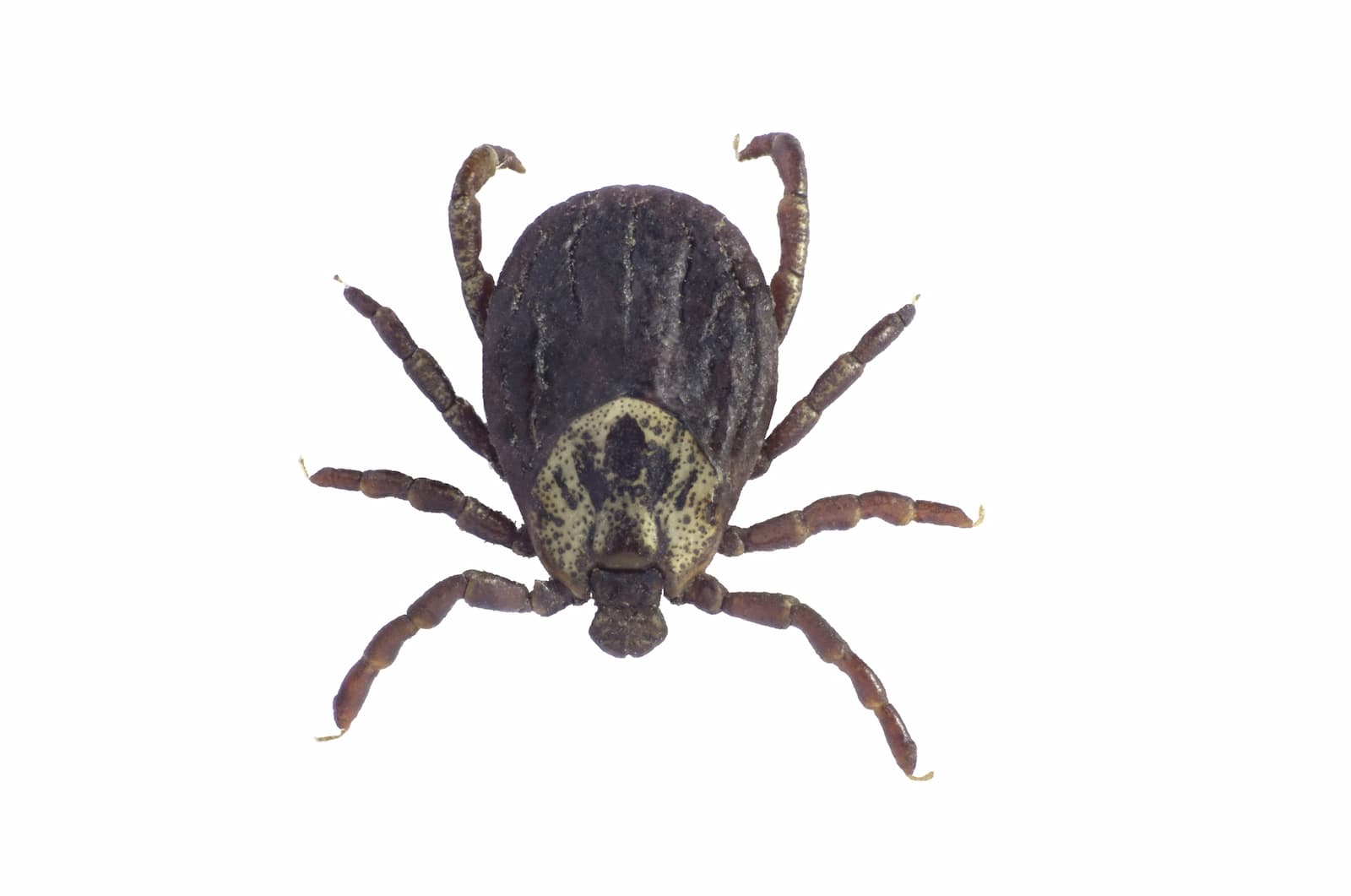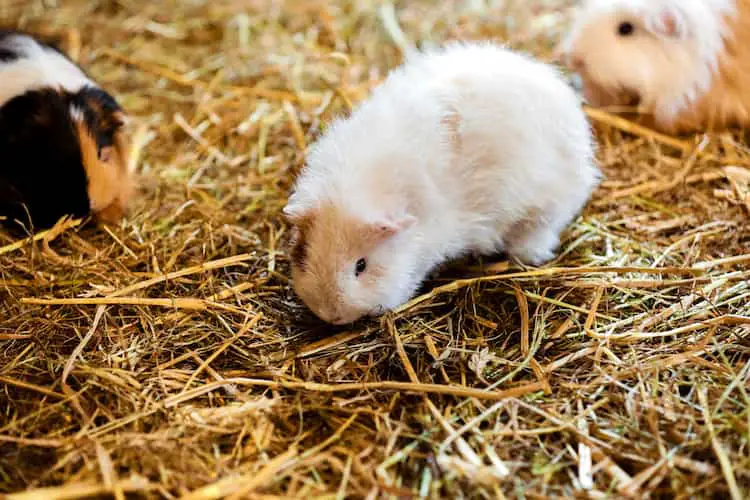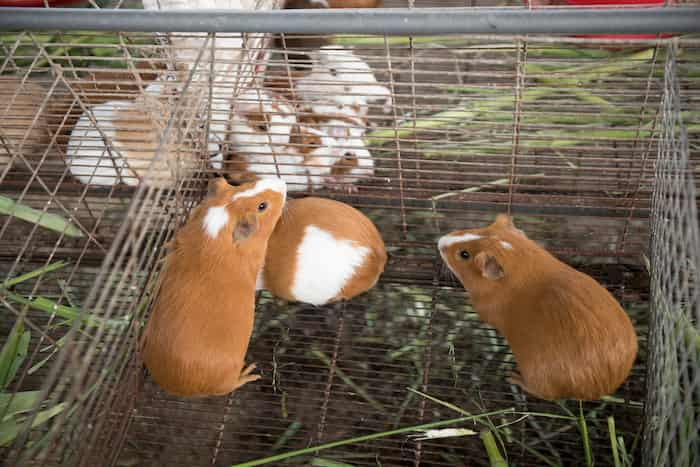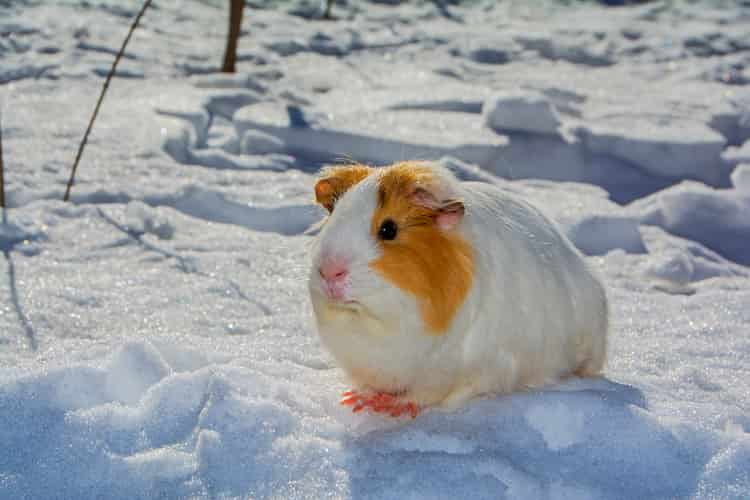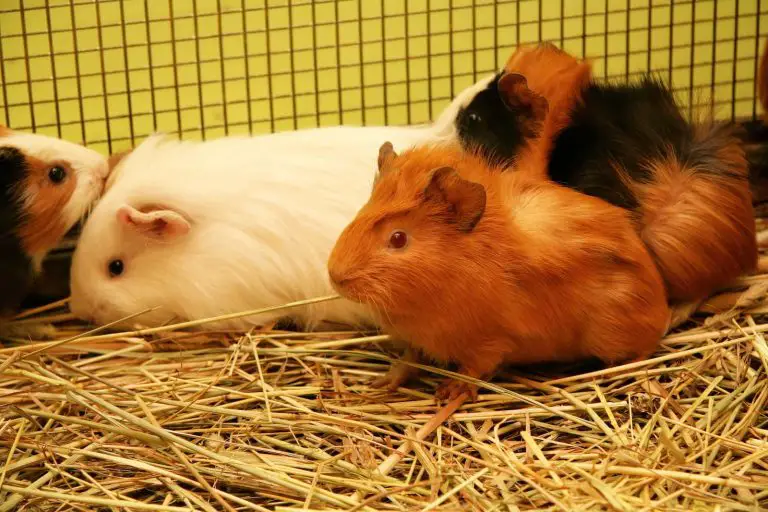Little Brown Bugs In Guineapig Cage:Identification+Elimination
Are you suddenly finding little brown bugs in your guinea pig cages? Such little pests are not just annoying but they can also cause serious kinds of diseases to your pet.
Here in this article, we will go through the most probable types of brown bugs that are commonly found in guinea pig cages and then will also discuss how to identify and eliminate them.
Some common types of brown bugs found in guineapig cages are furmites, mealybugs, carpet beetles, and booklice. They can cause discomfort to the guinea pigs and can even transmit serious infections. Such infestation happens owing to contact with other animals or from living under unhygienic conditions.
Let’s take a closer look at this topic.
Common types of little brown bugs found in Guinea pigs
A variety of different little bugs can be found in guinea pig cages but the most common ones are as follows:
Mealybugs
These are incredibly tiny, white insects that are found to reside in clusters and these kinds of insects generally prefer to be around plants and are very commonly found in the garden.
These insects get attracted to areas with vegetation, hence if you have plants present inside the cage for long periods they can end up attracting them.
Carpet Beetles
- These are also small brownish-looking insects that are recognized by their distinct pattern of scales on their back.
- They are generally attracted by wooly or feathery items and can cause infestation problems in the guinea pig’s cages if they have such items present within their cage and if those items are not being regularly cleaned.
Spider Beetles
These are brown as well as black colored small beetles that are prominently found around the locations where the guinea pigs have stored their food and these can cause severe damage to not only the food itself but to other materials present within the cage.
Fur mites
Fur mites are one of the most commonly found bugs that are known to infest guinea pig living spaces.
They live in the fur of the guinea pigs and feed on their skin which further leads to hair loss and skin irritation in the guinea pigs. If left untreated it can lead to serious infections.
Booklice
These are very tiny, greyish-white colored insects that are found in humid conditions and these generally feed on mold and other kinds of organic materials.
Such insects are quite commonly found in areas where abundant amounts of organic materials like wood, paper, etc are present or if that particular area is not being regularly cleaned.
How to identify the little brown bags (mites) found in your guinea pig cage
To properly identify the bugs found in the cage you need to look closely at each of the insects and consider observing the following features:
- The color of the bugs: Whether the color of the bugs is brown or black or white or grey is the most fundamental thing about identifying the bug type.
- Size and shape of the bug: It is important to know whether the bugs are extremely tiny or just small and whether they are round or more elongated.
- Presence of special patterns: Sometimes these bugs may have special distinct-looking patterns or marks on their back. They can be instantly identified with the help of those.
- The exact location where you found the bugs: The location where the majority of the bugs were residing plays an important role in correctly determining the types of these bugs. See if the bugs were found close to the food items or the bedding around the different plants present within the guinea pig or around other objects of organic nature.
Risks and Dangers of Having brown little Bugs in Guineapig Cages
- The bugs can bring in the possibility of causing a wide range of health problems in the guinea pigs. These bugs are loaded with microorganisms of bacterial, viral as well as fungal origin which can cause serious infection-related problems to your little friends.
- Symptoms like skin irritations, allergies, and respiratory issues are some of the few problems that can arise among the guineapigs owing to the infestation of these little bugs. In worse cases, they can cause diarrhea and anemia in the guinea pigs and if no action is taken it can turn life-threatening.
How to get rid of the little brown bugs (mites)in the guinea pig cage?
After you have successfully identified the little bugs in the cage. eliminating them is not that hard and you should take immediate steps to not only eliminate them but to again cleanse and sterilize the guinea pig cage before you put the guinea pigs back in.
The following processes can be quite effective in properly eradicating these bugs from the cage:
- If the whole habitat is swarming with bugs then you may need to use a vacuum cleaner to suck the bugs in the vacuum.
- Firstly remove all the infested materials: All the materials present within the guinea pig cage should be removed and properly cleansed or you should get rid of the ones that have no value.
This includes their bedding excess food and any other organic materials. The lesser items you have within the cage, the lesser will be the chances of pest infestation. If the cage is not regularly cleaned you can even see the growth of small mushrooms or other vegetation around the bedding.
- Clean the nest and cage thoroughly: You can start by wiping down all the surfaces of the cage and then vacuuming them. Rinse and clean the whole cage with a vet-approved detergent and soapy water and wash it rigorously with running water.
- You can then even try sterilizing the cage with sterilizing agents. You can consider using pesticides that are of organic origin and are specifically labeled as being safe to use around rodents and other small pets and should follow all the instructions on the label regarding the usage. You should always consult the vet if in doubt.
- Keep it outside out in the sun and let it dry before you add any kind of new bedding.
- Clean the areas around the guinea pig habitat zone to make sure that there is no presence of those bugs in your home or at least in their adjacent living areas. Vacuum the carpets, sofa, and other furniture thoroughly and keep the whole room ventilated.
How to prevent bug infestation in guinea pig cages?
Maintaining proper hygiene is of utmost importance for preventing the infestation of these little brown bugs in guinea pig habitats.
- You will have to clean the cage every few days and regularly need to get rid of their discharges.
- During the cleaning you need to get rid of the bedding and all the food and other stuff they have stored in their home.
- Wash the whole cage with soapy(mild pet-friendly detergent) hot water and keep it under the sun until it dries completely.
- It’s important to use medicated pet-friendly soaps, detergents, and insecticides to wash the cage. Harsh chemicals can be fatal to the health of your pets. If you are not sure always consult with your vet about the products you must use for cleaning. This step is very important and does not ignore this.
- You will have to be mindful of the presence of extra food in their bedding and keeping the cages or the guinea pig habitat areas dry and well-ventilated should be the most important priority.
Common Mistakes that can lead to pest infestations in Your Guineapig Cages
- Leaving food overnight: Always get rid of excess guinea pig foods as those can easily attract pests.
- Wrong bedding: Certain beddings attract pests more frequently than others. Example: Wooden shavings attract more pests than paper beddings.
- Not keeping the cage dry and ventilated: Always keep the room in which the guinea pigs are living well-ventilated. Ideally, that room should have multiple windows that allow loads of sunlight and air to come inside. Keep the age dry at all costs, make sure no water spillovers occur, and change excess water storage in the cage daily.
Should You Take Your Guinepigs to the vet in case of pest infestation in the cage?
You should take your guinea pigs to the vet for a checkup if you discover that the living area of the guinea pigs has been swarmed in by brown or black-colored bugs. You should do this even if your guinea pigs are not showing any signs of stress or illness. It is better to be safe than be sorry.
Having mites or other kinds of bug infestation in the guinea pig cages is never good news and it can be deadly for the health of these little furry animals. In case mites have already invaded the body fur of the piggies, the vet doctors will come up with a treatment plan to sort out that problem.
FAQ
How do I know if my guinea pig has mites?
If you find mites or unknown dark-colored bugs roaming around your guinea pig’s living space look closely at your guineapigs to see if they are showing any symptoms of illness. Particularly look for symptoms like:
- Excessive scratching and body biting especially around the upper body region.
- Loss of hair around the head and neck.
- Restlessness
- The respiratory problem, redness, and inflammation of the skin
These are just some of the symptoms, the presence of which can be troublesome for the guinea pigs and even fatal if no prompt treatment is provided.
Contact the vet if your guinea pigs show any sign of illness in their guinea pigs along with the presence of bugs in the cage. If you have any kind of suspicion that your piggies have mites, seek assistance ASAP.
So that was it guys…If you have any queries leave a comment below…

